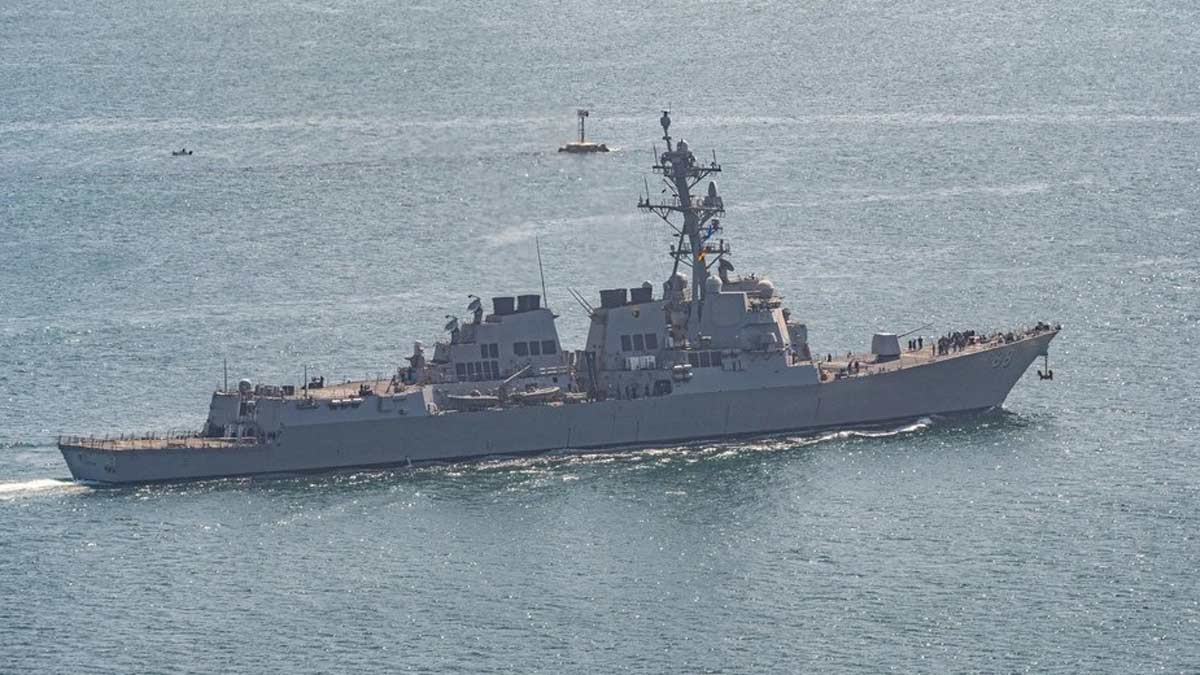In what is being seen as a show of strength by the US and its allies amid increasing tensions in the Indo-Pacific region, the guided-missile destroyer USS Preble has departed for Yokosuka naval base in Japan.
それでは皆さんおやすみなさい...
— akaumigame (@acaumigame) September 25, 2024
↓NAS North Island (CA)北端を通過するUSS Preble (DDG 88)(2024)
FDNF-J派遣開始時に撮影されました。
NAVBASE San Diego (CA)を定繋港に指定しDESRON 21に所属していたDDG 88は、約9年間のFDNF-J派遣に伴い定繋港をCFAYへ変更した上でDESRON 15に転属します。 pic.twitter.com/hTCCKDJm2T
While the deployment of the Arleigh Burke-class missile destroyer is part of a scheduled rotation as it will replace USS Benfold (DDG 65), the US Navy said the forward presence of Preble directly supports the commitment of the US to aid Japan while improving its ability to protect strategic interests.
US Navy destroyer USS Preble (DDG-88), equipped with latest laser weapon, departed San Diego in California for Yokosuka in Japan on Sept. 22.https://t.co/c7a6wZfFhh https://t.co/gBuZO96vph pic.twitter.com/heYKeSa6B5
— Ryan Chan 陳家翹 (@ryankakiuchan) September 24, 2024
USS Preble is equipped with a high-energy laser weapon that can be used to shoot down drones and missiles.
A few months ago, the US Navy, in an official statement, had said, “The Arleigh Burke-class guided-missile destroyer USS Preble (DDG 88) will move to Yokosuka, Japan, as part of a scheduled rotation of forces in the Pacific.”
On Wednesday, the US Navy said, “Preble will directly support the Defense Strategic Guidance to posture the most capable units forward in the Indo-Pacific Region.”
The US Navy said it values the contributions of Japan to the peace and stability of the Indo-Pacific and its long-term commitment and hospitality in hosting the US forces forward deployed there.
Although the development may be routine, it is indeed a major development in the Indo-Pacific region, as it could be seen as part of the attempts by the US to outpace and outwit an increasingly assertive China in the region.
The US Navy said this move allows it to have “ the greatest amount of striking power and operational capability” in the region.
“The security environment in the Indo-Pacific requires that the U.S. Navy positions the most capable ships forward. This posture allows the most rapid response times for maritime and joint forces and brings our most capable ships with the greatest amount of striking power and operational capability to bear in the timeliest manner,” the Navy said.
READ MORE: Understanding 'Project 33', the US Navy's ambitious plan to outpace China by 2027
The deployment coincides with the release of 'Project 33', a strategic initiative by the US to boost the readiness and capabilities of its Navy to counter potential threats, especially those emanating from China. The project intends to end maintenance delays, scale up robotic and autonomous systems, create command centres, recruit and retain talent, and invest in watertight competency among others.
“It is obvious that the US is placing strong priority on the Indo-Pacific region and making sure that it has the best assets in the right areas for the contingencies it might face. Put simply, the US wants its best weapons systems right on the front line,” defence security expert Ryo Hinata-Yamaguchi has been quoted as saying.


